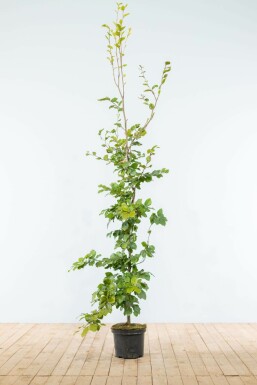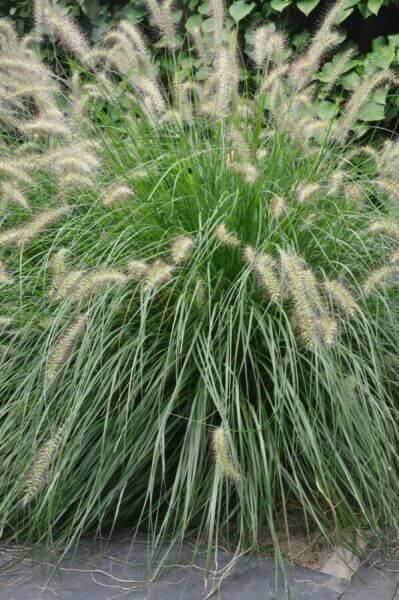Hedge Plants For Natural Barriers
Hedge Plants For Natural Barriers
Blog Article
Hedge Plants For Commercial Properties
Boost your garden's attraction with rich hedge varieties such as Yew (Taxus), Thuja, Laurel, Photinia, and Bamboo, celebrated for their structural stability and environmental benefits.
Yew and Thuja supply evergreen coverage and winter season resilience, while Laurel provides quick growth and broad, aromatic leaves.
Photinia adds seasonal appeal with its lively red foliage, and Bamboo lends a low-maintenance, peaceful atmosphere.
These hedges enhance air quality, decrease sound, and create tranquil, private areas.
Appropriate planting, spacing, and upkeep guarantee energetic development and environmental harmony.
Explore how these lavish ranges can raise your garden's charm and well-being.
Secret Takeaways
Change Your Garden With Lush Hedge Varieties
- Select Yew for its thick, evergreen growth and exceptional durability.
- Opt for Laurel for its quick growth and broad leaves, guaranteeing fast personal privacy.
- Pick Photinia for its lively seasonal foliage, which turns a striking dark red.
- Utilize Bamboo for a low-maintenance, winter-hardy hedge with aesthetic appeal.
- Area plants 2-3 per meter and prune frequently for optimal growth and health.
Popular Hedge Plants
When transforming a garden with lush hedge varieties, it's important to think about popular hedge plants such as Yew, Thuja, Laurel, and Photinia due to their distinct qualities and advantages.
Yew (Taxus) is extremely respected for its longevity and dense, green development, making it a prime choice for withstanding landscapes.
Thuja is kept in mind for its evergreen foliage and robust winter season durability.
Photinia adds seasonal vibrancy with red leaves that darken gradually, producing vibrant visual appeal.
Laurel provides fast growth and fragrant, broad leaves, ideal for fast personal privacy.
In Addition, Bamboo is an exceptional option for ambiance, offering a low-maintenance, winter-hardy option that enhances the garden's visual with its sophisticated, swaying walking sticks.
These selections cater to a range of horticultural requirements and preferences.
Benefits of Garden Hedges
Garden hedges use a plethora of advantages, making them an important addition to any landscape. These natural barriers are affordable to execute and offer significant wind protection, boosting air flow and contributing to noise decrease. The dense foliage of hedges like Thuja and Beech ensures personal privacy by obstructing visibility, producing a peaceful and remote environment.
Hedges likewise play an important function in microclimate policy, providing a steady environment that cultivates plant development and lessens temperature level fluctuations. Their detailed leaf structures filter pollutants, improving air quality and adding to a healthier garden environment.
Furthermore, hedges master sound decrease, absorbing and deflecting acoustic waves to lower ambient sound levels. This dual functionality of providing both visual and acoustic personal privacy improves the overall harmony and aesthetic appeal of any garden.
Planting and Maintenance Tips
For an effective hedge, precise preparation of the planting area is vital. Make sure the soil has proper pH and drain to support strong root advancement.
Area the plants appropriately for the picked species. Water the hedge frequently throughout its initial growth stage, adjusting as required with seasonal modifications.
Carry out a organized bug control and disease avoidance strategy, utilizing natural or chemical treatments when needed. Frequently inspect for aphids, mites, and fungal infections.
Apply mulch to keep wetness and reduce weeds. Seasonal pruning promotes dense growth and air circulation, important for plant health.
Following these standards will help you cultivate a dynamic, properly maintained hedge that enhances the appeal of your garden.
Spacing and Trimming Standards
Spacing and Cutting Standards
Appropriate spacing and cutting are important for cultivating healthy, aesthetically appealing hedges. Sufficient spacing ensures each plant gets adequate nutrients, light, and airflow.
Follow these guidelines for optimum hedge maintenance:
- Spacing: Position hedge plants 2-3 plants per meter to motivate robust development.
- Pruning Techniques: Routine pruning is essential for preserving preferred hedge height and shape. Cut brand-new development in summer and cut down older wood throughout winter.
- Seasonal Care: Adjust cutting approaches and schedules according to seasonal requirements to guarantee plant health.
- Hedge Height: Routinely screen and cut to keep the desired hedge height and accomplish consistent aesthetic appeals.
Sticking to these actions will ensure your hedge prospers, enhancing both the appeal and performance of your garden.
Choosing the Right Hedge
Picking the Right Hedge
Choosing the suitable hedge includes examining elements such as mature height, foliage density, and ecological resilience. Effective hedge plant choice needs understanding each types' development attributes and site-specific flexibility.
For example, Yew (Taxus) offers exceptional longevity and thick growth, while Thuja is noteworthy for its winter season durability. Furthermore, considering upkeep requirements is crucial; fast-growing types like Laurel or Privet demand regular cutting, whereas low-maintenance choices like Bamboo or Ivy might be more effective for those looking for minimal maintenance.
Ecological elements such as soil type, light schedule, and wetness conditions ought to also direct the choice process. This mindful technique ensures the chosen hedges will grow, offering both aesthetic and functional advantages to the garden landscape.
Shipment and Planting Advice
To guarantee your hedge plants thrive, they ought to be provided by specialized couriers and planted without delay upon arrival.
Follow these vital actions for effective planting:
- Soil Preparation: Enrich the soil with organic matter to improve drain and nutrient material.
- Planting Depth: Develop a trench two times the width and equal to the depth of the root ball.
- Watering Methods: Water completely after planting, keeping the soil consistently damp however not filled.
- Mulching: Use a layer of mulch to retain moisture and reduce weeds.
Consumer Assistance and Service
Given the important role of timely support in horticultural pursuits, our consumer support team is readily available 6 days a week through telephone, email, and social networks to offer skilled guidance and swiftly address any concerns. Their commitment to fast action times ensures customer satisfaction by dealing with questions related to plant health, optimum planting methods, and upkeep schedules.

Interaction Method
-------------------
Within 24 hr
This extensive assistance system, reinforced by an outstanding 9.3/ 10 consumer rating, highlights our commitment to boosting the gardening experience for every client.
Regularly Asked Concerns
How Long Does It Take for Hedge Plants to Establish?
Hedge plants normally need one to 3 years to end up being fully established, with the exact duration varying by species and growing conditions.
Efficient care during this crucial period is important for robust growth. Consistent watering, vigilant weed control, and proper fertilizer application are pivotal in promoting strong root development.
For example, fast-growing species like Laurel may establish faster, while slower-growing varieties such as Yew might take longer. Diligent maintenance accelerates the establishment procedure, leading to thick and healthy hedges.
What Are the Best Hedge Plants for Privacy?
The question of the very best hedge plants for privacy involves examining evergreen and deciduous alternatives.
Evergreen hedges like Thuja, Laurel, and Cypress supply year-round coverage, ensuring constant personal privacy.
In contrast, deciduous hedges such as Beech offer seasonal personal privacy, shedding leaves in chillier months.
Key maintenance pointers for personal privacy hedges include routine trimming, fertilizing in spring, and proper spacing-- typically 2 to 3 plants per meter.
In addition, consistent watering and thorough weed elimination are crucial for promoting healthy, thick growth.
Can Hedge Plants Attract Wildlife to My Garden?
Yes, hedge plants can draw in wildlife to your garden by providing necessary benefits like shelter, food, and nesting websites, consequently improving regional biodiversity. Yew, holly, and laurel are excellent for drawing in birds, while ivy supports a variety of bugs.
Nevertheless, it is necessary to keep in mind that there are some disadvantages, such as increased upkeep to manage insects and regular maintenance. Thoroughly choosing and keeping hedge varieties can assist stabilize these drawbacks and benefits, eventually fostering a dynamic and sustainable community in your garden.
Exist Any Flowering Hedge Plants Available?
Yes, there are flowering hedge plants offered that can boost the beauty of your garden.
For example, Elaeagnus, likewise understood as Olive Willow, produces fragrant white flowers in the fall, adding a touch of beauty.
Photinia, another popular option, showcases vibrant red leaves that mature into a rich green, developing a vibrant visual effect throughout the seasons.
To ensure these plants prosper, it's vital to practice proper pruning techniques and seasonal upkeep, such as cutting new growth in the summertime and cutting down in the winter season.
These steps will assist maintain the health and visual appeal of your blooming hedges.
How Do I Avoid Bugs in My Hedge Plants?
To avoid bugs in hedge plants, use natural bug control click here methods and maintain proper hedge care. Introduce advantageous bugs like ladybugs, which take advantage of harmful insects, to produce a well balanced community.
Frequently inspect your hedges for indications of problem and promptly remove any affected parts to prevent the spread. Ensure the health of your hedges by applying balanced fertilizers and supplying appropriate water.
Make use of mulching to maintain soil moisture and proper spacing to reduce plant stress and promote robust development. These practices jointly help in reducing pest issues and keeping a healthy hedge.
Conclusion
In essence, picking the best hedge varieties such as Yew, Thuja, and Laurel can change any garden into a peaceful sanctuary. These plants offer year-round greenery, boost visual appeal, and offer practical advantages like noise reduction and wind defense.
Appropriate planting methods, accurate spacing, constant watering, and seasonal trimming are vital for optimum growth.
Trustworthy delivery services and expert consumer support make sure a smooth experience from purchase to planting, making it simpler than ever to raise your outdoor area.
Garden hedges provide a multitude of advantages, making them a valuable addition to any landscape. These natural barriers are cost-effective to execute and provide substantial wind protection, boosting air flow and contributing to sound reduction. The thick foliage of hedges like Thuja and Beech ensures privacy by obstructing exposure, developing a remote and serene environment.

Pruning Strategies: Routine pruning is necessary for preserving desired hedge height and shape. Trim brand-new growth in summer and cut back older wood throughout winter.
Report this page